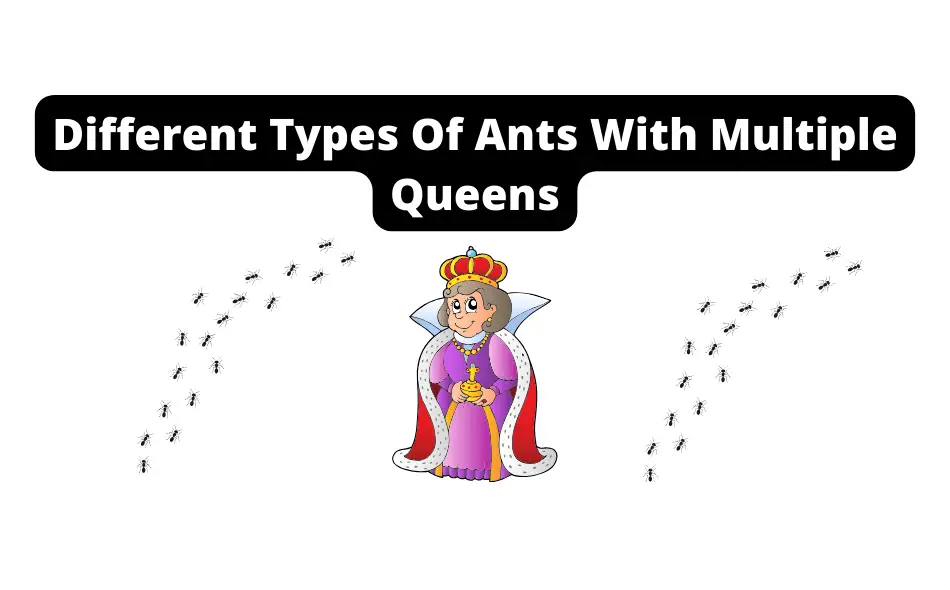Ants are our favorite insects here at Ant-keeper.com (I bet you couldn’t have guessed that!). One of the most exciting aspects of ants is their ability to form colonies with multiple queens, a rare trait in the animal kingdom.
In this post, we will explore 23 types of ants with multiple queens, providing a complete list with images to help you identify these fascinating creatures.
Whether you are an ant enthusiast or just a little curious about the world outside your home, we hope this post will give you a deeper appreciation for these remarkable insects.
1) Myrmoxenus
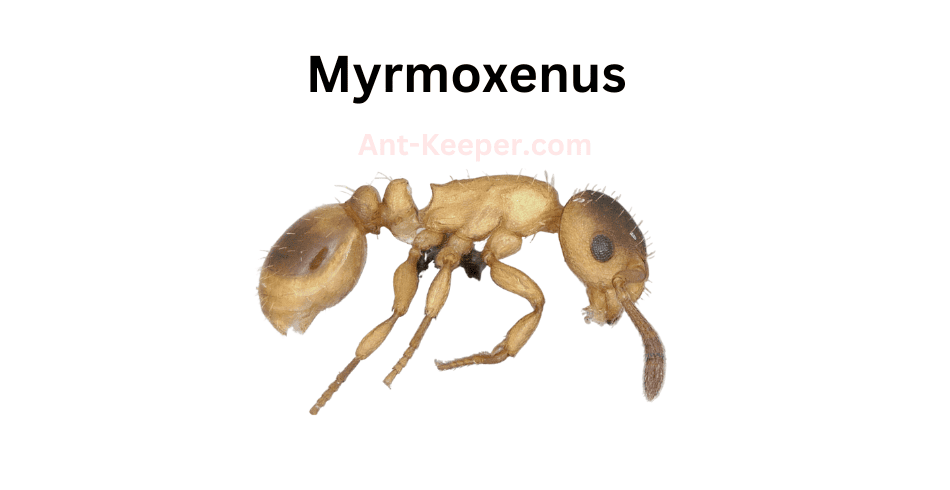
Myrmoxenus is a genus of ants that belongs to the subfamily Myrmicinae.
The ants in this genus are small in size, measuring between 2-4 mm in length.
They are known for their unique behavior of raiding other ant colonies and stealing their brood to raise as their own.Myrmoxenus ants have a distinctive appearance, with a dark brown or black body and long, slender legs.
They have a narrow waist and a curved thorax, which gives them a distinctive shape.
The antennae of Myrmoxenus ants are long and thin, with 12 segments.These ants are social insects, living in colonies that can range in size from a few dozen to several hundred individuals.
The colonies are typically polygynous, meaning they have multiple queens.
The queens are responsible for laying eggs, while the workers take care of the brood and forage for food.Myrmoxenus ants are known for their aggressive behavior towards other ant species.
They will often raid the nests of other ants, overpowering the defenders and stealing their brood.
Once they have captured the brood, they will take it back to their own colony and raise it as their own.Despite their aggressive behavior, Myrmoxenus ants are not considered pests.
They do not cause damage to structures or crops, and they do not pose a threat to humans.
In fact, they are an important part of the ecosystem, helping to control the populations of other insects.In conclusion, Myrmoxenus ants are fascinating creatures with unique behavior and a distinctive appearance.
They are an important part of the ecosystem and play a valuable role in controlling insect populations.
2) Crazy Ants

Crazy ants, also known as Nylanderia fulva, are a species of ant that belong to the family Formicidae.
They are small in size, measuring only about 2.2 to 3 mm in length, and are reddish-brown in color.
These ants are known for their erratic and unpredictable behavior, hence the name "crazy ants."Crazy ants are native to South America, but have since spread to other parts of the world, including North America, Asia, and Australia.
They are highly adaptable and can thrive in a variety of environments, including urban areas, forests, and grasslands.One of the most notable characteristics of crazy ants is their ability to form large colonies with multiple queens.
This allows them to quickly establish themselves in new areas and outcompete other ant species.
Crazy ants are also known for their aggressive behavior towards other insects and animals, including humans.In addition to their aggressive behavior, crazy ants are also known for their ability to cause damage to electrical equipment.
They are attracted to electrical currents and can easily short-circuit electronics, causing damage and potentially starting fires.Despite their small size, crazy ants are a formidable species that can have a significant impact on their environment.
As they continue to spread to new areas, it is important to monitor their behavior and take steps to control their populations in order to minimize their impact on ecosystems and human infrastructure.
3) Agraulomyrmex
Agraulomyrmex is a genus of ants that belongs to the subfamily Myrmicinae.
These ants are known for their unique morphology and behavior.
The workers of Agraulomyrmex are small in size, measuring between 2 and 3 millimeters in length.
They have a distinctive appearance, with a narrow waist and a large head that is wider than their thorax.Agraulomyrmex ants are typically found in forested areas, where they nest in soil or leaf litter.
They are known to be arboreal, meaning they live in trees and are often found foraging on the branches and leaves.
These ants are also known to be predatory, feeding on small insects and other arthropods.One of the most interesting aspects of Agraulomyrmex ants is their social behavior.
They are known to be polygynous, meaning that a single colony can have multiple queens.
This is a rare trait among ants, as most species have only one queen per colony.
The workers of Agraulomyrmex are also known to be highly specialized, with different individuals performing specific tasks such as foraging, nest maintenance, and brood care.Overall, Agraulomyrmex ants are a fascinating group of insects that exhibit unique morphology and behavior.
Their arboreal lifestyle, predatory habits, and polygynous social structure make them an interesting subject for further study.
4) Centromyrmex
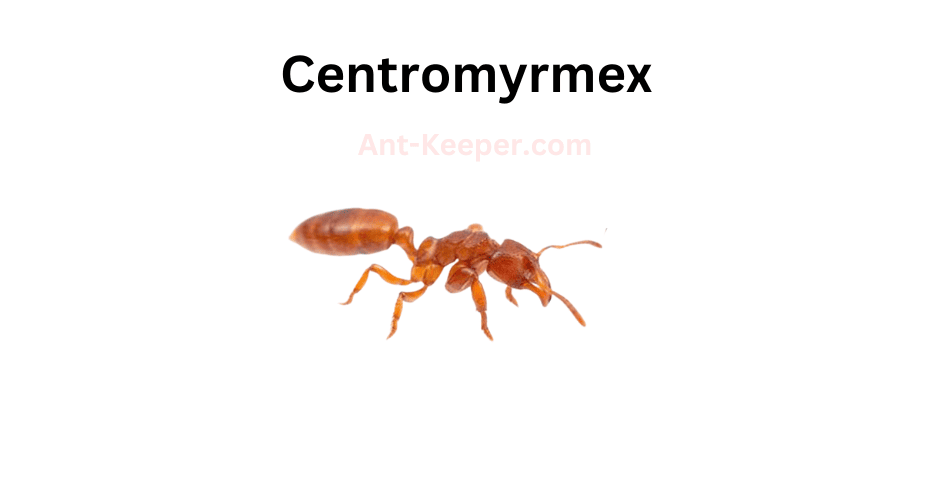
Centromyrmex is a genus of ants that belongs to the family Formicidae.
These ants are known for their unique morphology and behavior.
They are typically found in tropical regions and are known to inhabit forested areas.Centromyrmex ants are characterized by their large size and elongated mandibles.
They are also known for their aggressive behavior and are often seen engaging in territorial disputes with other ant species.
These ants are primarily carnivorous and feed on other insects and small invertebrates.One of the most interesting aspects of Centromyrmex ants is their reproductive behavior.
These ants are known to engage in a behavior called "pleometrosis," which involves multiple queens coexisting within a single colony.
This behavior is rare among ants and is thought to be an adaptation to the harsh conditions of their environment.Overall, Centromyrmex ants are a fascinating and unique species that continue to intrigue scientists and researchers around the world.
Their behavior and morphology provide valuable insights into the evolution and adaptation of ants in tropical ecosystems.
5) Pseudolasius
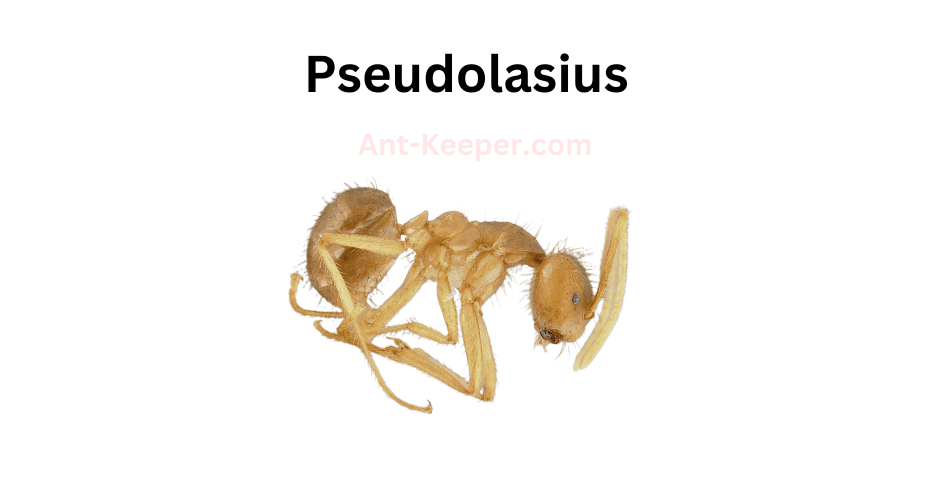
Pseudolasius is a genus of ants belonging to the family Formicidae.
These ants are known for their small size and distinctive appearance, with workers measuring between 2-3 mm in length.
The genus is characterized by the presence of a single petiolar node and a lack of spines on the mesosoma.Pseudolasius ants are typically found in forested areas, where they forage for food and build their nests in soil or leaf litter.
They are known to feed on a variety of food sources, including insects, nectar, and honeydew produced by sap-sucking insects.One interesting aspect of Pseudolasius behavior is their tendency to form large colonies with multiple queens.
This is in contrast to many other ant species, which typically have a single queen per colony.
The presence of multiple queens allows Pseudolasius colonies to grow rapidly and efficiently exploit food resources.Despite their small size, Pseudolasius ants play an important role in forest ecosystems.
They are known to disperse seeds and contribute to soil health through their nest-building activities.
Additionally, they serve as an important food source for many other animals, including birds and small mammals.Overall, Pseudolasius ants are a fascinating and important group of insects that play a vital role in forest ecosystems.
6) Rogers Dacetine Ants
Roger's Dacetine Ants are a species of ant that belong to the Dacetini tribe.
They are known for their small size, measuring only a few millimeters in length.
These ants are typically found in forested areas and are known to be arboreal, meaning they live in trees.One of the unique characteristics of Roger's Dacetine Ants is their ability to form colonies with multiple queens.
This is a rare trait among ants, as most species have only one queen per colony.
The queens of this species are also known to be relatively small in size compared to other ant species.Roger's Dacetine Ants are omnivorous, meaning they consume both plant and animal matter.
They are known to feed on small insects, nectar, and honeydew produced by aphids.
These ants are also known to have a mutualistic relationship with certain species of plants, where they protect the plant from herbivores in exchange for food.Despite their small size, Roger's Dacetine Ants play an important role in their ecosystem.
They help to control populations of small insects and contribute to the pollination of certain plant species.
However, like many other ant species, they are also susceptible to habitat loss and other threats to their survival.
7) Trachymyrmex Jamaicensis Antiguensis
Trachymyrmex jamaicensis antiguensis is a species of ant belonging to the genus Trachymyrmex.
These ants are known for their unique behavior of cultivating fungus as their primary food source.
They are small in size, measuring around 2-3 mm in length, and have a dark brown to black coloration.The workers of Trachymyrmex jamaicensis antiguensis are polymorphic, meaning they come in different sizes and perform different tasks within the colony.
The smaller workers are responsible for tending to the fungus gardens, while the larger workers are tasked with foraging for food and defending the colony.These ants are found in tropical regions and are commonly found in forested areas.
They build their nests underground and are known to form large colonies with multiple queens.
The colonies of Trachymyrmex jamaicensis antiguensis are highly organized and efficient, with each individual performing their designated role to ensure the survival and growth of the colony.Overall, Trachymyrmex jamaicensis antiguensis is a fascinating species of ant with unique behaviors and adaptations that allow them to thrive in their natural habitat.
8) Cercopia Ants
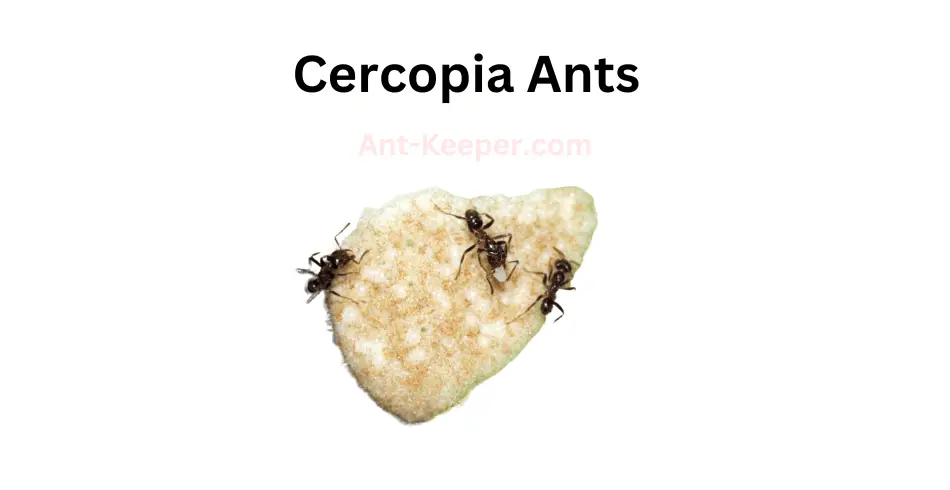
Cercopia ants are a species of ants that belong to the Formicidae family.
They are known for their large size, with workers measuring up to 1.5 centimeters in length.
These ants are typically reddish-brown in color and have a distinctive, elongated head.Cercopia ants are primarily found in forested areas and are known to build their nests in soil or under rocks.
They are omnivorous and feed on a variety of food sources, including insects, fruits, and nectar.One unique characteristic of Cercopia ants is their ability to produce formic acid, which they use as a defense mechanism against predators.
When threatened, these ants will release formic acid from their bodies, which can cause irritation and pain to potential attackers.Cercopia ants are also known for their complex social structure, with colonies consisting of multiple queens and thousands of workers.
These ants communicate with each other through a variety of chemical signals, including pheromones.Overall, Cercopia ants are a fascinating species of ants that play an important role in their ecosystem.
Their large size, unique defense mechanisms, and complex social structure make them a subject of interest for scientists and nature enthusiasts alike.
9) Paramycetophylax
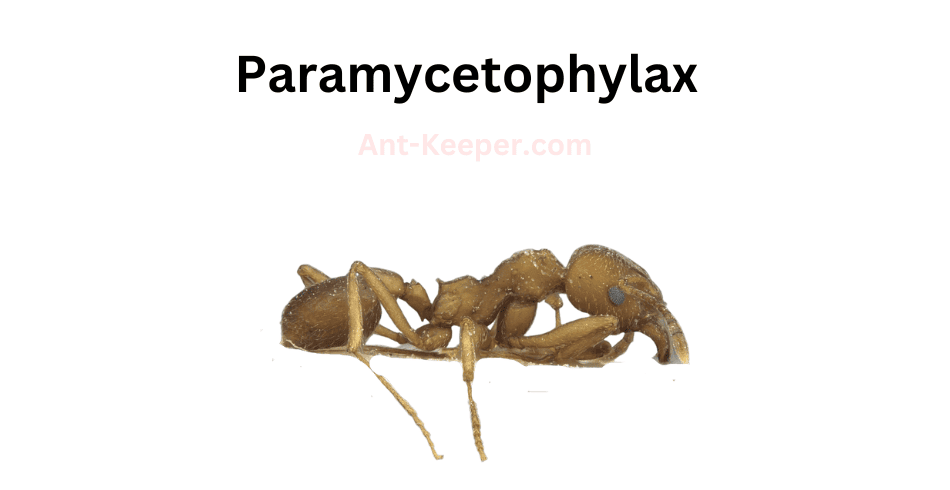
Paramycetophylax is a genus of ants belonging to the family Formicidae.
These ants are known for their small size and unique physical characteristics.
The workers of this genus are typically between 1.5 and 2.5 millimeters in length, with a dark brown or black coloration.
They have a distinctively elongated head and mandibles that are curved downwards.Paramycetophylax ants are primarily found in tropical and subtropical regions, where they inhabit a variety of habitats including forests, grasslands, and deserts.
They are known to be highly adaptable and can thrive in both natural and disturbed environments.These ants are social insects, living in colonies that can range in size from a few dozen to several thousand individuals.
The colonies are typically polygynous, meaning they have multiple queens.
The queens are responsible for laying eggs, while the workers are responsible for foraging, caring for the young, and defending the colony.Paramycetophylax ants are omnivorous, feeding on a variety of food sources including insects, nectar, and plant sap.
They are also known to engage in mutualistic relationships with other insects, such as aphids, which provide them with a source of honeydew in exchange for protection.Overall, Paramycetophylax ants are fascinating creatures that play an important role in their ecosystems.
Their unique physical characteristics and adaptable nature make them a valuable subject of study for scientists and researchers.
10) Rhopalothrix
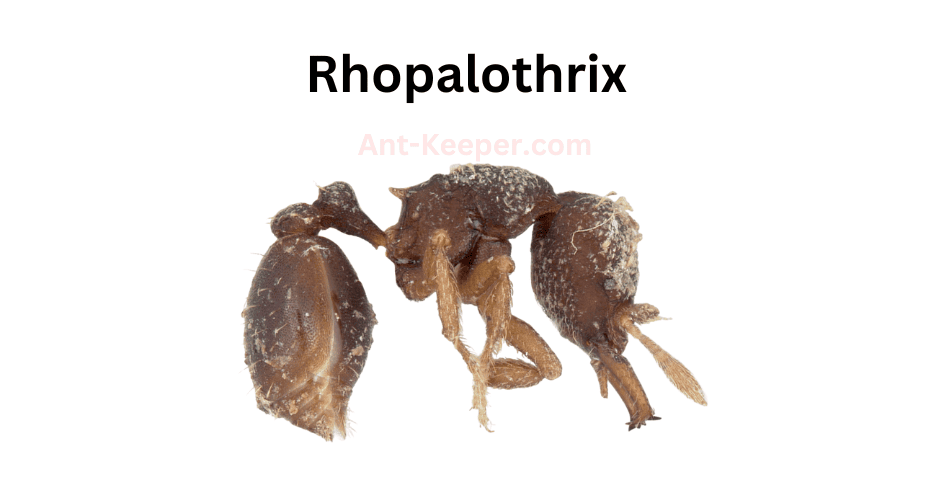
Rhopalothrix is a genus of ants belonging to the family Formicidae.
These ants are known for their unique morphology and behavior.
The workers of Rhopalothrix are small in size, measuring between 2-4 mm in length.
They have a distinct head shape, with a narrow and elongated head that is wider at the base.
The antennae of Rhopalothrix are also elongated and have a distinct club-like shape at the end.Rhopalothrix ants are known for their cryptic behavior.
They are often found living in small colonies in the leaf litter or soil.
These ants are also known for their specialized diet, which consists of small arthropods such as mites and springtails.
Rhopalothrix ants have been observed using their elongated heads to probe into small crevices and cracks in the soil to capture their prey.One of the most interesting aspects of Rhopalothrix ants is their reproductive behavior.
Unlike most ants, Rhopalothrix colonies are often headed by a single queen.
However, in some species, multiple queens may be present in a colony.
These queens are known to engage in a behavior called "pleometrosis," where they work together to establish a new colony.
This behavior is rare in ants and is thought to be an adaptation to living in harsh environments.Overall, Rhopalothrix ants are a fascinating group of insects with unique morphology and behavior.
Their specialized diet and reproductive behavior make them an important subject of study for entomologists and ecologists alike.
11) Dark Rover Ants
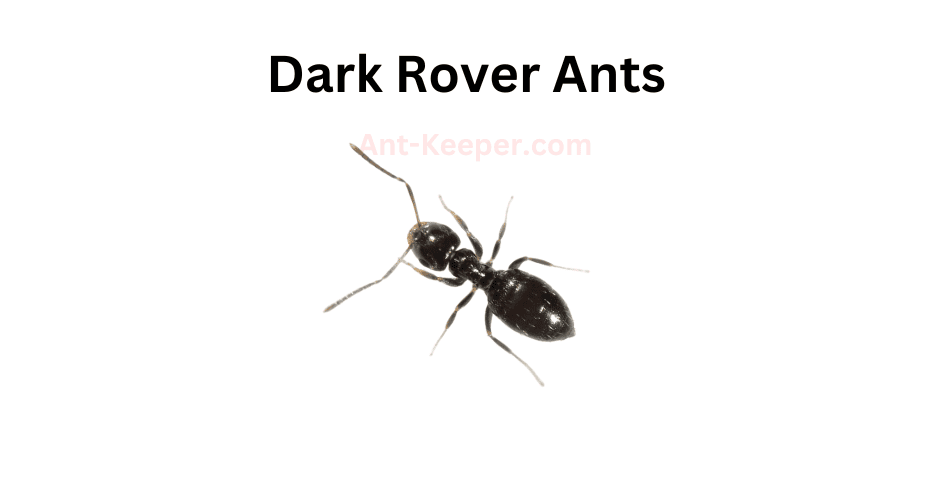
The Dark Rover Ant, also known as Brachymyrmex patagonicus, is a small species of ant that belongs to the family Formicidae.
These ants are typically dark brown or black in color and have a shiny appearance due to their smooth exoskeleton.Dark Rover Ants are known for their ability to quickly adapt to new environments and thrive in urban areas.
They are often found in parks, gardens, and other green spaces, as well as in buildings and homes.
These ants are omnivorous and will feed on a variety of food sources, including insects, fruits, and sugary substances.One unique characteristic of the Dark Rover Ant is their ability to form large colonies with multiple queens.
This allows them to rapidly expand their population and dominate their environment.
However, they are also known to engage in territorial disputes with other ant species.Dark Rover Ants are considered a nuisance pest in many areas due to their tendency to invade homes and buildings in search of food and shelter.
They can also cause damage to electrical equipment and wiring.Overall, the Dark Rover Ant is a fascinating species of ant that has adapted well to urban environments.
While they may be a nuisance to humans, they play an important role in their ecosystem and are an important food source for many other animals.
12) Pharaoh Ants
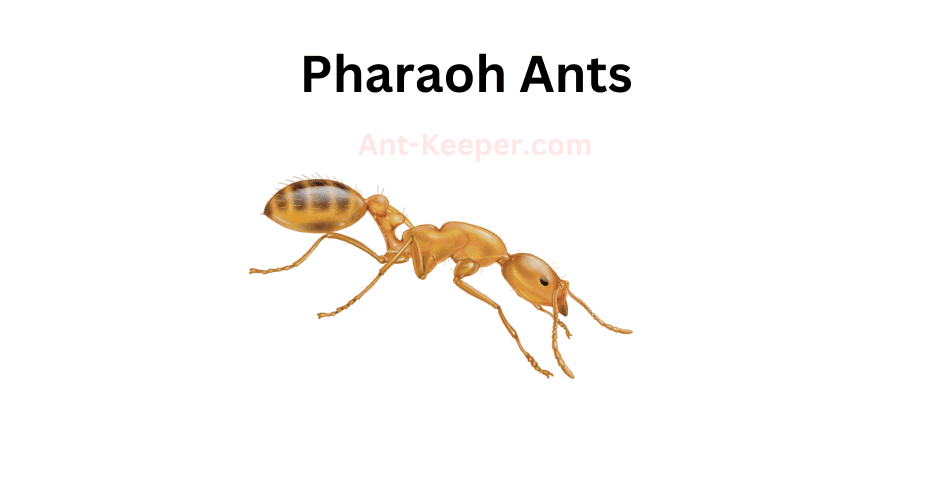
Pharaoh ants, scientifically known as Monomorium pharaonis, are small, yellowish-brown ants that measure about 2 mm in length.
They are commonly found in indoor environments such as homes, hospitals, and commercial buildings.
Pharaoh ants are known for their ability to form large colonies with multiple queens.
These colonies can contain thousands of workers and can quickly infest a building.
They are also known for their ability to adapt to changing environments and can easily relocate their nests if disturbed.
Pharaoh ants are omnivorous and feed on a variety of foods including sweets, meats, and other insects.
They are also known to feed on human fluids such as blood and wound exudates.
Due to their small size and ability to hide in small crevices, pharaoh ants can be difficult to control.
They are known to be resistant to many common insecticides and can quickly rebound after treatment.
Pharaoh ants are also a concern in healthcare settings as they can transmit diseases such as salmonella and staphylococcus.
They can also contaminate sterile equipment and supplies.
Overall, pharaoh ants are a common pest in indoor environments and can be difficult to control.
It is important to seek professional pest control services to effectively manage infestations.
13) Immigrant Pavement Ants
The Immigrant Pavement Ant (Tetramorium immigrans) is a species of ant that belongs to the family Formicidae.
These ants are commonly found in urban areas and are known for their ability to adapt to different environments.
They are small in size, measuring between 2.5 to 3.5 mm in length, and have a dark brown or black coloration.The Immigrant Pavement Ants are known for their aggressive behavior towards other ant species and their ability to form large colonies.
They are also known for their ability to survive in harsh conditions, such as extreme temperatures and droughts.
These ants are omnivorous and feed on a variety of food sources, including insects, seeds, and sugary substances.The reproductive system of the Immigrant Pavement Ants is unique, as they have multiple queens in a single colony.
This allows for the colony to grow rapidly and expand their territory.
The queens are responsible for laying eggs, while the workers are responsible for caring for the young and maintaining the colony.The Immigrant Pavement Ants are considered a nuisance pest in urban areas, as they often invade homes and buildings in search of food and shelter.
They can also cause damage to pavement and concrete structures by excavating soil and creating tunnels.Overall, the Immigrant Pavement Ants are a fascinating species of ant that have adapted to survive in urban environments.
Their ability to form large colonies and their aggressive behavior towards other ant species make them a unique and interesting species to study.
14) Odorous House Ants
Odorous House Ants, also known as Tapinoma sessile, are a common species of ant found in many parts of the world.
These ants are small, measuring only 2.4 to 3.3 mm in length, and are typically brown or black in color.One of the most distinctive features of Odorous House Ants is their odor.
When crushed, these ants emit a strong, unpleasant smell that has been described as resembling rotten coconut or blue cheese.
This odor is used by the ants to communicate with one another and to mark their trails.Odorous House Ants are social insects that live in large colonies.
These colonies can contain thousands of individual ants, with multiple queens and workers.
The workers are responsible for foraging for food, caring for the young, and defending the colony.These ants are omnivorous, meaning they will eat both plant and animal matter.
They are known to feed on a variety of foods, including sweets, meats, and fats.
They are also attracted to moisture, and will often nest near sources of water.Odorous House Ants are considered a nuisance pest, as they can invade homes and buildings in search of food and shelter.
They are not known to cause any significant damage, but their presence can be unsightly and their odor can be unpleasant.Control of Odorous House Ants typically involves locating and eliminating the colony, as well as sealing up any entry points into the home or building.
Baits and insecticides can also be used to control the population.
15) Formicoxenus Diversipilosus
Formicoxenus diversipilosus is a species of ant belonging to the subfamily Myrmicinae.
These ants are small in size, measuring around 2-3 mm in length.
They are characterized by their unique pilosity, with a combination of long and short hairs covering their body.
The head and thorax of Formicoxenus diversipilosus are reddish-brown in color, while the abdomen is darker.Formicoxenus diversipilosus is known to inhabit forested areas, where they nest in dead wood or under bark.
They are also known to form satellite colonies, which are smaller colonies that are connected to the main colony by trails.
These ants are omnivorous, feeding on a variety of food sources including insects, nectar, and honeydew.One interesting aspect of Formicoxenus diversipilosus is their social structure.
They are known to have a polygynous queen system, where multiple queens coexist within a colony.
This is a rare trait among ants, as most species have a single queen per colony.
The presence of multiple queens in Formicoxenus diversipilosus colonies is thought to increase the reproductive success of the colony.Overall, Formicoxenus diversipilosus is a fascinating species of ant with unique physical and behavioral characteristics.
Their small size and inconspicuous nature make them easy to overlook, but they play an important role in forest ecosystems as predators and scavengers.
16) Vollenhovia Nipponica
Vollenhovia nipponica is a species of ant that belongs to the Formicidae family.
This ant is known for its unique physical characteristics, including its small size and dark brown coloration.
The workers of this species are typically around 2-3mm in length, making them one of the smallest ant species in the world.Vollenhovia nipponica is a ground-dwelling ant that can be found in a variety of habitats, including forests, grasslands, and urban areas.
They are known to be omnivorous, feeding on a variety of food sources such as insects, nectar, and honeydew.This ant species is also known for its unique social behavior.
They are polygynous, meaning that a single colony can have multiple queens.
This allows for increased reproductive success and colony growth.
The workers of Vollenhovia nipponica are also known to exhibit a behavior called "trophallaxis," where they exchange food and other nutrients with each other through mouth-to-mouth contact.Overall, Vollenhovia nipponica is a fascinating ant species that exhibits unique physical and social characteristics.
Their small size and omnivorous diet make them an important part of many ecosystems, and their polygynous behavior allows for increased reproductive success and colony growth.
17) Myrmisaraka
Myrmisarakabe is a species of ant that belongs to the Formicidae family.
These ants are known for their small size and aggressive behavior towards other ant species.
They have a dark brown or black coloration and are often found in forested areas.One of the unique characteristics of Myrmisarakabe ants is their ability to form large colonies with multiple queens.
This allows them to quickly expand their territory and dominate other ant species in the area.
They are also known for their ability to defend their colonies fiercely, using their powerful mandibles to attack any intruders.Myrmisarakabe ants are omnivorous, feeding on a variety of food sources including insects, nectar, and plant sap.
They are also known to cultivate fungi within their colonies, which they use as a food source.Despite their aggressive behavior towards other ant species, Myrmisarakabe ants have been found to form symbiotic relationships with certain species of butterflies.
The ants protect the butterfly larvae from predators and in return, the butterflies provide the ants with a sugary secretion.Overall, Myrmisarakabe ants are fascinating creatures with unique behaviors and characteristics that make them an important part of their ecosystem.
18) Myrmecocystus Melliger
Myrmecocystus melliger is a species of ant that belongs to the family Formicidae.
These ants are commonly known as honey pot ants due to their unique ability to store food in their bodies.
The workers of this species have a specialized crop that they use to store nectar and honeydew.
This crop can expand to several times its original size, allowing the ants to store large amounts of food.Myrmecocystus melliger ants are typically found in arid regions and are well adapted to survive in harsh environments.
They have a unique social structure, with multiple queens in each colony.
This allows for a higher reproductive output and ensures the survival of the colony in case one queen dies.These ants are also known for their aggressive behavior towards other ant species.
They will defend their territory fiercely and are not afraid to attack intruders.
Myrmecocystus melliger ants are also known to have a symbiotic relationship with aphids.
They protect the aphids from predators and in return, the aphids provide the ants with honeydew.Overall, Myrmecocystus melliger ants are fascinating creatures with unique adaptations that allow them to survive in harsh environments.
Their ability to store food in their bodies and their aggressive behavior towards intruders make them an important part of their ecosystem.
19) Myrmecocystus Yuma
Myrmecocystus Yumabe is a species of ant that belongs to the family Formicidae.
These ants are commonly known as honey pot ants due to their unique ability to store food in their bodies.
The workers of this species have a specialized crop that they use to store nectar and honeydew.
This crop can expand to several times its normal size, allowing the ants to store large amounts of food.Myrmecocystus Yumabe ants are typically found in arid regions and are well adapted to survive in harsh environments.
They have a unique social structure, with multiple queens in each colony.
This allows for a higher reproductive rate and ensures the survival of the colony in case of queen mortality.The workers of Myrmecocystus Yumabe ants are typically small, measuring around 3-4 mm in length.
They are reddish-brown in color and have a distinctively round abdomen.
The males are slightly larger than the workers and have wings, while the queens are much larger and have a more elongated abdomen.These ants are known to be aggressive towards other ant species and will defend their territory fiercely.
They are also known to have a symbiotic relationship with aphids, which they protect and feed on their honeydew secretions.Overall, Myrmecocystus Yumabe ants are fascinating creatures with unique adaptations that allow them to survive in harsh environments.
Their ability to store food in their bodies and their complex social structure make them an important species to study in the field of entomology.
20) Acanthostichus Arizonensis
Acanthostichus arizonensis is a species of ant belonging to the family Formicidae.
These ants are commonly found in arid regions and are known for their aggressive behavior.
They have a dark brown or black coloration and are relatively small in size, measuring around 4-5 mm in length.Acanthostichus arizonensis is a ground-dwelling ant species that constructs nests in soil or under rocks.
They are known to be highly territorial and will aggressively defend their nests against intruders.
These ants are also known to be opportunistic predators, feeding on a variety of insects and other small invertebrates.The reproductive system of Acanthostichus arizonensis is unique compared to other ant species.
They have a polygynous mating system, which means that a single colony can have multiple queens.
This allows for increased genetic diversity within the colony and can lead to more successful reproduction.Overall, Acanthostichus arizonensis is an interesting and important species of ant in arid regions.
Their aggressive behavior and unique reproductive system make them a fascinating subject for scientific study.
21) Forelius Mccooki
Forelius Mccookibe is a species of ant that belongs to the Formicidae family.
It is a small ant that measures around 2-3 millimeters in length.
The ant has a reddish-brown coloration and a slender body.
The head of the ant is elongated and has a pair of large compound eyes.
The antennae of the ant are also long and slender.Forelius Mccookibe is a social insect that lives in colonies.
The colonies are usually small and consist of a few hundred individuals.
The ant is known to be a generalist forager and feeds on a variety of food sources, including nectar, honeydew, and insects.
The ant is also known to be a scavenger and will feed on dead insects and other organic matter.The reproductive system of Forelius Mccookibe is unique.
The ant has a polygynous mating system, which means that a single colony can have multiple queens.
The queens are responsible for laying eggs, and the workers take care of the brood and the colony.Forelius Mccookibe is found in a variety of habitats, including forests, grasslands, and deserts.
The ant is known to be a common species in its range and is not considered to be threatened.
The ant plays an important role in the ecosystem by controlling the population of other insects and by contributing to the nutrient cycling process.
22) Myrmecocystus Testaceus
Myrmecocystus testaceus is a species of ant belonging to the family Formicidae.
These ants are commonly known as honey pot ants due to their unique ability to store food in their swollen abdomens, which can grow to be several times larger than the rest of their body.
This adaptation allows them to survive in arid environments where food sources may be scarce.The workers of Myrmecocystus testaceus are typically around 5-7 mm in length and are reddish-brown in color.
They are known to forage for food during the cooler hours of the day and can often be found on the ground or climbing vegetation in search of seeds, insects, and other small prey.The colony structure of Myrmecocystus testaceus is unique in that it consists of multiple queens, which is known as polygyny.
This allows for increased reproductive output and colony resilience in the face of environmental stressors.
The queens are typically larger than the workers and are responsible for laying eggs and maintaining the colony.Myrmecocystus testaceus is an important member of arid ecosystems, as they play a crucial role in seed dispersal and nutrient cycling.
They are also preyed upon by a variety of predators, including other ants, spiders, and birds.Overall, Myrmecocystus testaceus is a fascinating species of ant with unique adaptations that allow them to thrive in harsh environments.
Their importance in ecosystem functioning highlights the need for conservation efforts to protect their habitats.
Check Out Some Of Our Other Ant By Location Posts
| 23 Different Types Of Ants With Multiple Queens [Full Breakdown With Some Images] | Ants are our favorite insects here at Ant-keeper.com (I bet you couldn’t have guessed that!). One of the most exciting aspects of ants is their ... |
| 308 Different Types Of Ants With Red Heads [Full List With Partial Images] | Ants are our favorite insects here at Ant-keeper.com (I bet you couldn’t have guessed that!). One of the most exciting aspects of ants is their ... |
| 28 Different Types Of Ants With Big Heads [Full List With Images] | Ants are fascinating insects with a wide variety of shapes and sizes. Some species of ants have evolved to have disproportionately large heads, which serve ... |
